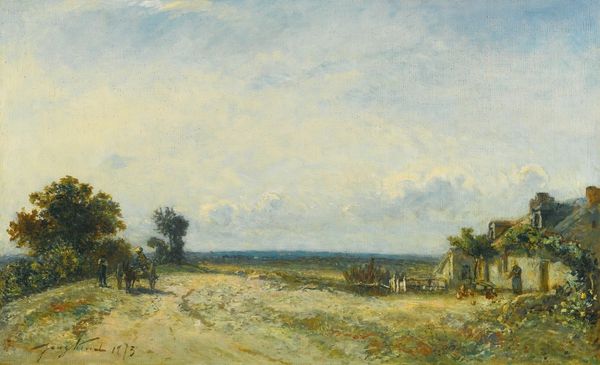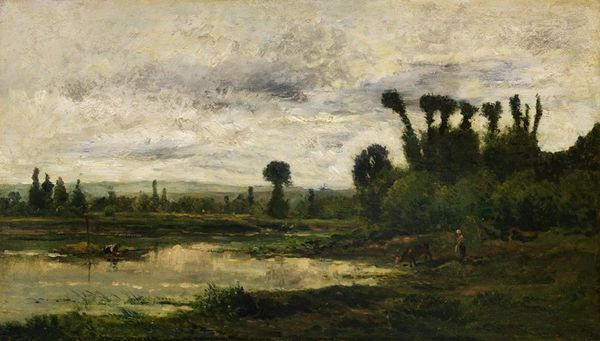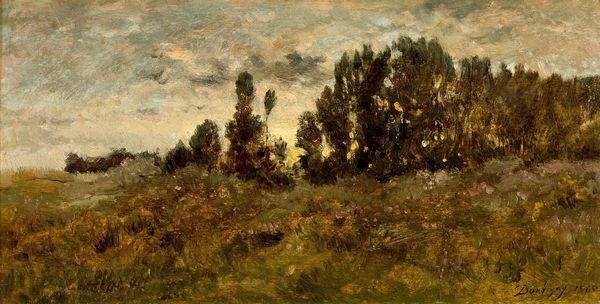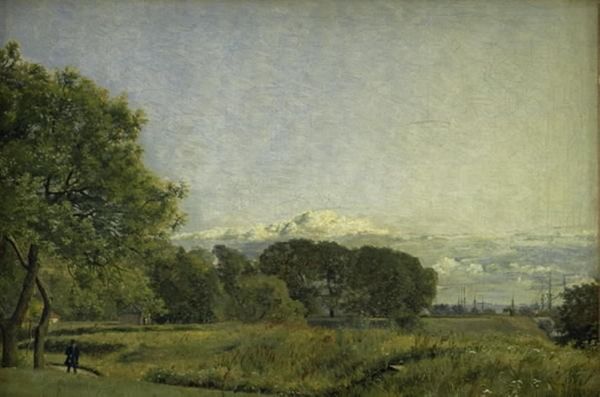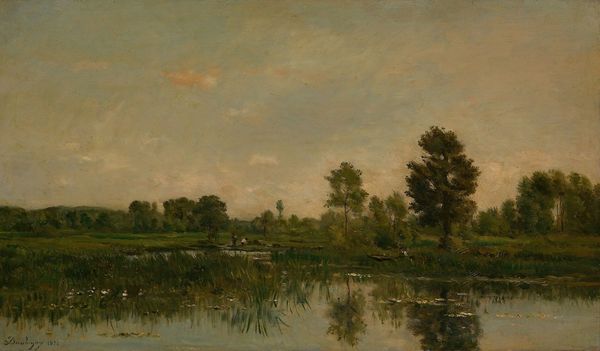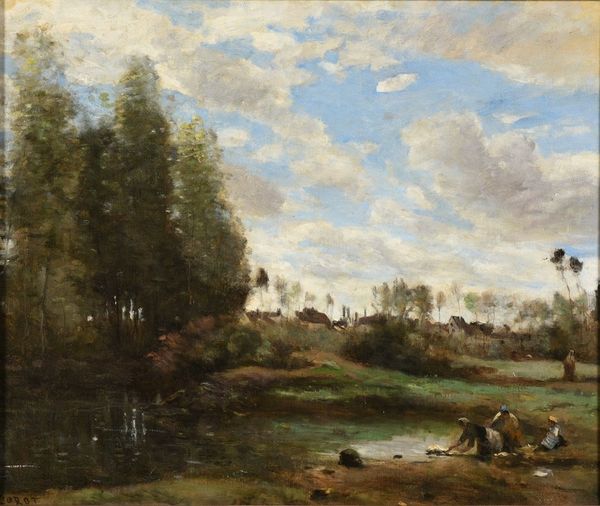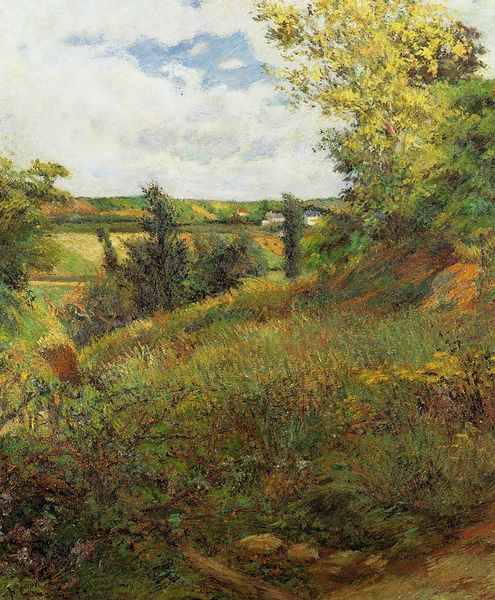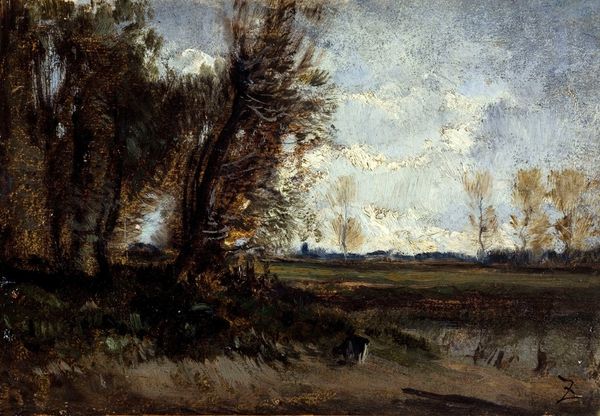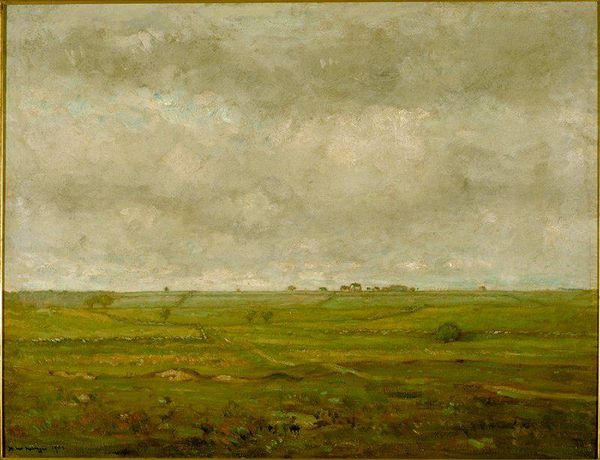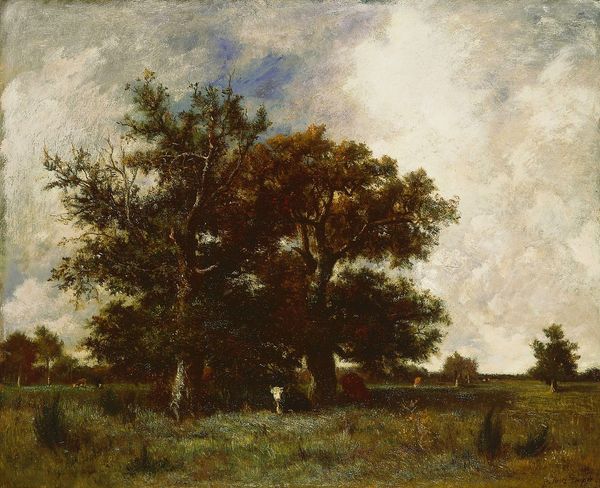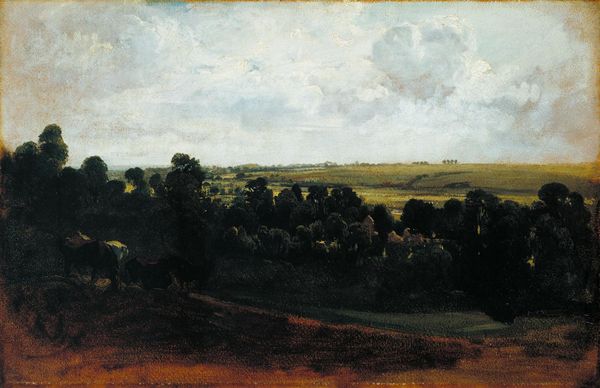
painting, plein-air, oil-paint
#
painting
#
impressionism
#
plein-air
#
oil-paint
#
landscape
#
impressionist landscape
#
oil painting
#
romanticism
Copyright: Public Domain: Artvee
Curator: This painting immediately evokes a feeling of tranquility. The muted tones, particularly the blues and greens, lend a sense of calm, almost pastoral stillness. Editor: That's a wonderful starting point. What we're seeing is “Paysage,” a landscape, potentially by Charles-François Daubigny. This is quite possibly an open-air painting, which aligns Daubigny with a lineage that really pushed against the rigid salon system of the time. Curator: Interesting. Tell me more about that "push." From an activist point of view, the Impressionists are challenging a power structure through aesthetics; could it be argued Daubigny prepared that ground? Editor: Precisely. The materiality of Daubigny's oil paint application itself resists academic standards. Notice the visible brushstrokes, the lack of sharp detail. This creates a surface that’s less about perfect representation and more about sensory impression, a democratizing of visual expression if you will. Curator: It certainly seems to reflect a move away from the aristocratic and idealized portrayals prevalent in earlier art. Were these scenes painted from life rather than being staged? Editor: Absolutely. This interest in "nature as it is," devoid of the historical or mythological baggage, became a vital contribution. By focusing on the landscape, Daubigny essentially turns his attention to a subject available to everyone regardless of status—the field and sky themselves become worthy subjects, implicitly leveling the artistic playing field. Curator: That reframing allows for new possibilities to emerge. I also wonder about accessibility and representation here. How did the Impressionists expand—or limit—the identities represented in these kinds of scenes? Is Daubigny depicting the life of leisure for rural classes, or is there something deeper? Editor: It’s true. Daubigny wasn’t explicitly making those arguments in terms of identity and representation, that would come later, but through technique and his attention to the everyday, his contributions offered future artists space to make a start. His influence helped Monet find his voice, for example. Curator: I find this work compelling. Reflecting on his methods and output makes the era a bit clearer. The art of its time—indeed! Editor: I agree; thinking about Daubigny's style helped unpack what artistic change actually entails.
Comments
No comments
Be the first to comment and join the conversation on the ultimate creative platform.
